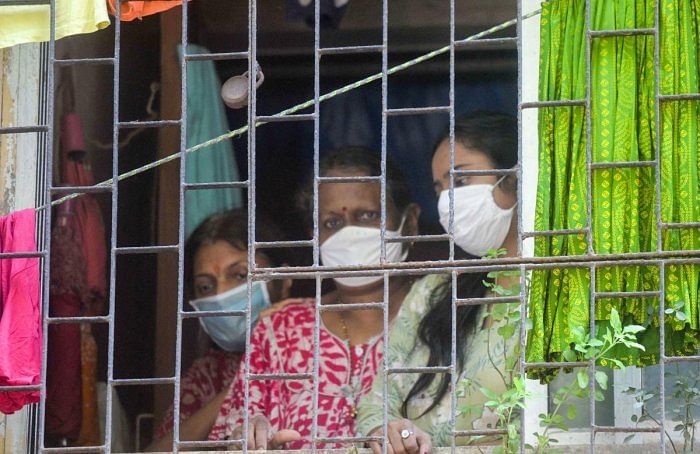
The COVID–19 pandemic has upended the lives of millions of Indians with some sections of society much more disproportionately affected than others. While there is an increasing recognition of the hardship faced by migrant workers and labourers, not much has been discussed about the negative consequences of India’s pandemic strategy on women.
To begin with, the government’s proposed lockdown plan as a pandemic control measure entails a clear gender dimension, where an increased domestic workload will be disproportionately borne by women.
In India, predominant social norms and the existing structure of the workforce puts the responsibility of running the household on women, which includes the obligation of attending to and caring for each family member. Besides, women are also likely to be responsible for carrying out daily household chores such as mopping, dish washing and cleaning. The men given India’s patriarchal context, are not expected to perform any household tasks.
As per the Organisation of Economic Cooperation and Development (OECD), an Indian woman does nearly six hours of unpaid work each day in comparison to an Indian male who barely gives 51.8 minutes to such tasks. And with the new restrictions on movement, closures of schools and businesses, and with every member of the family being at home, the burden of this unpaid household work is bound to fall more heavily on women.
Domestic violence
In addition, based on the likelihood that the imposition of quarantine measures could increase the rates of substance abuse, heighten stress and anxiety, and aggravate financial difficulties -- all considered as major risk factors in intimate partner abuse -- there would be a natural escalation in gender based domestic violence also. This has already been witnessed in China as well as the US. And for India, where almost every third woman suffers from physical or sexual violence according to the National Family Health Survey-4, the lockdown definitely does not bring good news.
According to the data presented by the National Commission for Women, ever since the lockdown was announced, there has already been a surge in domestic violence complaints with 291 cases reported (from March 23) only through email. Nonetheless, the exact numbers still remain unknown and are likely to be much higher.
Public health strategy
Such issues also spill onto the healthcare sector. Due to the increasing number of COVID-19 patients, health-care workers -- particularly the nurses of whom approximately 88.9 per cent are women -- remain much more vulnerable to contracting the deadly virus. This is in addition to an already existing shortage of basic equipment for healthcare workers.
Similarly, mental health issues have also been forgotten in laying out India’s pandemic strategy. While social distancing measures could add another level of anxiety and depression for both women and men, a larger share of these women are anticipated to experience the negative impacts of the pandemic on their mental health with no resources that could help them. Indeed even normally, women are far more susceptible to developing depressive disorders as compared to men. According to WHO, depressive disorders account for close to 41.9 per cent of disability from neuropsychiatric disorders among women, compared to 29.3% among men
The government should have established helplines, digital counselling sessions and proper medical assistance for women experiencing mental health issues in order to provide them with the support to deal with such tough times.
Economic impact
Due to the pandemic causing continual economic disruptions, informal and part-time jobs stand at the forefront of being suspended and in India women occupy a major chunk of these jobs. The Indian informal economy employs nearly 81 per cent of the country’s workforce according to the International Labour Organisation, and an overwhelming majority of working women in India are employed in this sector.
Likewise, since consumption patterns or the purchasing ability are likely to plummet during the crisis, exports and imports will also be affected leading to problems for women. For example, reports indicate that in 2008, 86 per cent of the total female workers were engaged in the exporting sector while the corresponding figure for the male workers was 73 per cent.
Moreover, jobs created during and after an economic crisis mostly target men, making it difficult for the women to spring back. Thus, more women are likely to be left jobless in the long-term, speeding up the already much visible decline in the female labour force participation.
However, to tackle the financial difficulties, the government did announce a relief package aimed at shielding the poor, of which cash transfers worth Rs 500 will be provided to the Jan Dhan account-holding women over the next three months. This amount is rather pitiful, and is extremely inadequate given the magnitude of the problem and its impact on women.
Secondly, with its entire focus on women belonging to the lower strata, the government has forgotten about the middle-class women, who amid the cessation of economic activity are also likely to suffer as much as the poor. Lastly, the government has laid out no employment plan to assist women, who are either at the verge of or have already lost their jobs owing to the economic uncertainty.
Although, it is true that if purely seen as a physical illness, the deadly virus appears to affect women less severely than the men, but the pandemic, like any other crisis, has magnified all existing inequalities including gender disparity. Which is why the magnitude of this gender difference and its implications on the COVID-19 response must be studied with haste for India to tackle the situation more appropriately and efficiently.
(Akanksha Khullar is a researcher at the Institute of Peace and Conflict Studies, Delhi. She tweets at @akankshakhullar)
The views expressed above are the author’s own. They do not necessarily reflect the views of DH